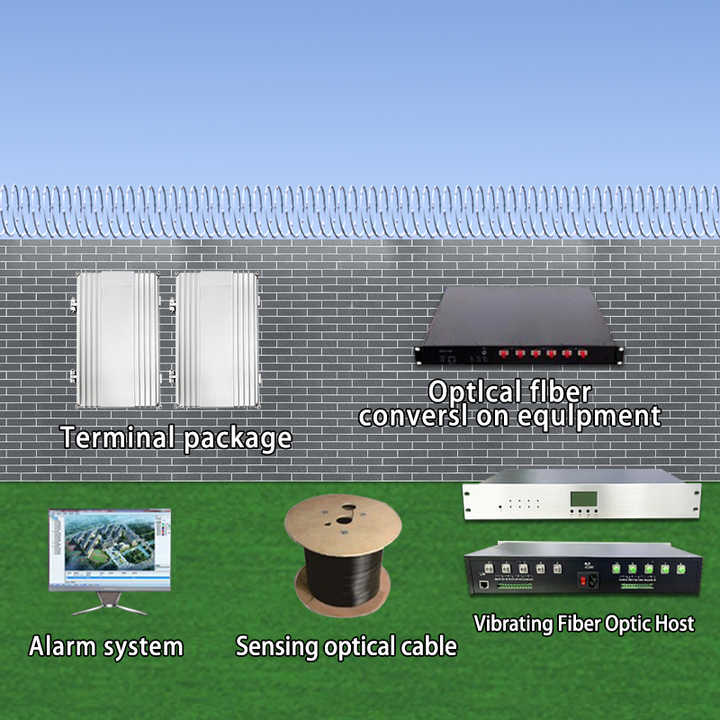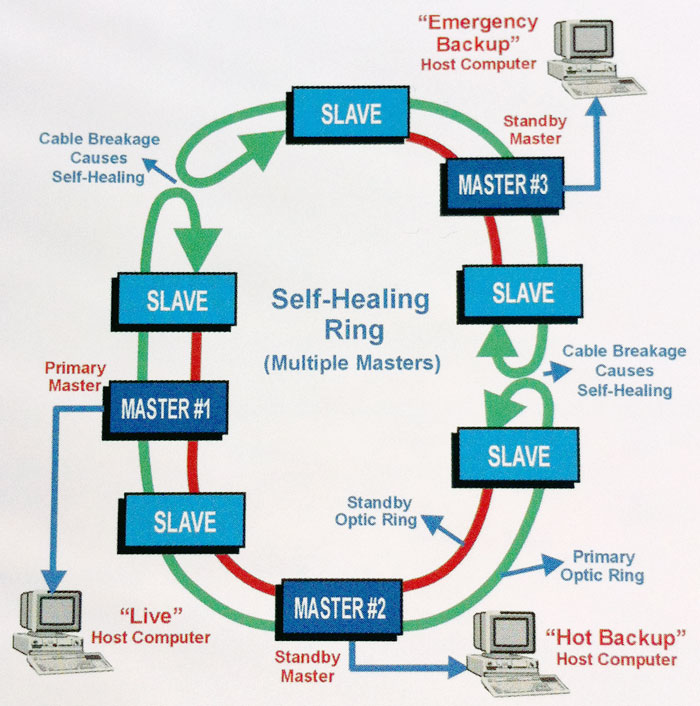The Value of a Fiber Optic Security System in Protecting Critical Infrastructure and Facilities
The Value of a Fiber Optic Security System in Protecting Critical Infrastructure and Facilities
Blog Article
Why Fiber Optic Safety Equipments Are the Future of Security
The change to fiber optic safety systems marks a considerable innovation in the realm of protection, driven by their phenomenal information transmission abilities and durability to exterior disturbances. As the landscape of protection advances alongside arising modern technologies such as AI and IoT, the potential for fiber optics to boost and redefine safety frameworks becomes increasingly evident.
Advantages of Fiber Optic Solutions
Among the main advantages of fiber optic systems is their exceptional bandwidth capability, which helps with the transmission of large volumes of information over fars away without considerable loss. This characteristic is specifically advantageous for protection applications that call for the continual tracking and transfer of high-def video clip feeds, sensor information, and various other critical details. Fiber optics can accommodate the expanding demands of modern-day safety systems, guaranteeing that information stays undamaged and trusted.
Furthermore, fiber optic cables are much less at risk to electromagnetic interference, which can be a considerable problem in settings with numerous digital tools. This resistance boosts the honesty of the information being sent, therefore lessening the threat of information breaches or system failures. Moreover, fiber optic systems are naturally more secure than standard copper wires, as touching right into a fiber optic line without discovery is extremely difficult.
The resilience of fiber optic cable televisions also contributes to their charm. They are resistant to ecological variables such as wetness and temperature level variations, minimizing upkeep costs and increasing system long life. On the whole, these benefits position fiber optic systems as a robust and efficient option for contemporary safety facilities, making sure reputable and safe information transmission.
Improved Data Transmission Rate

The ability to send substantial amounts of information promptly facilitates the seamless assimilation of high-def video clip feeds and advanced analytics. Protection systems can now refine and analyze information in real-time, enhancing action times and situational awareness. In addition, fiber optic connections support longer transmission distances without degradation of signal high quality, making them ideal for extensive protection networks.
The raised speed of fiber optic systems not only enhances the efficiency of safety and security operations yet additionally decreases latency. This is particularly essential in important circumstances where timely decision-making can prevent safety and security breaches or reduce potential risks. As companies continue to focus on safety and efficiency, the demand for rapid and reliable data transmission will certainly strengthen fiber optic systems as a cornerstone of modern protection framework.
Resistance to Interference
Fiber optic protection systems consistently demonstrate phenomenal resistance to electro-magnetic interference, a crucial benefit in environments susceptible to electronic sound. Unlike typical copper cable televisions, which can be adversely affected by magnetic fields, superhigh frequency disturbance, and other forms of electric disruption, fiber optic cable televisions use light to transmit information. This integral property makes certain that the signals continue to be clear and unchanged, despite surrounding digital activity.
The use of glass or plastic fibers in fiber optic modern technology develops an obstacle versus interference, permitting reliable information transmission also in tough scenarios such as commercial facilities, city locations with high electronic click over here traffic, or areas near radio towers. This characteristic considerably lowers the likelihood of signal destruction or loss, making fiber optic systems especially suitable for protection applications where stability and accuracy of data are extremely important.
Moreover, this resistance to interference improves the overall efficiency and dependability of protection systems, making certain that tracking and alert systems operate effortlessly. In a world where protection is significantly intimidated by innovative innovations, the resilience of fiber optic systems stands apart as a crucial attribute, enhancing their standing as a vital element of contemporary safety and security infrastructure.
Cost-Effectiveness Over Time
Substantial expense savings can be achieved with time with the execution of fiber optic safety systems. While the initial financial investment might seem greater contrasted to traditional copper-based systems, the long-term monetary benefits emerge through reduced functional and upkeep prices (fiber security). Fiber optic cables are naturally extra resilient and you can check here much less susceptible to ecological elements, which translates to reduce replacement and repair service expenses over their life expectancy
Furthermore, fiber optic systems call for less power to run, which even more lowers energy prices. Enhanced data transmission capabilities enable less repeaters and amplifiers, reducing devices investment and streamlining setup procedures. The scalability of these systems also adds to cost-effectiveness, as organizations can expand their safety and security facilities without incurring considerable additional costs.
An additional element to take into consideration is the increased performance in surveillance and feedback capabilities that optical fiber supply. Improved real-time data transmission can bring about quicker incident response times, potentially mitigating losses and obligations connected with safety and security violations. In sum, the long-lasting advantages of fiber optic safety systems not only warrant the initial expenditure yet likewise place them as a monetarily sensible option for organizations looking for robust protection options.

Future Innovations in Safety
Progressing modern technologies are readied to transform safety and security systems, incorporating man-made knowledge (AI) and artificial intelligence to enhance threat detection and reaction capabilities. These innovations will allow protection systems to evaluate vast amounts of information in real-time, identifying patterns and abnormalities that indicate prospective threats. This proactive method will make it possible for faster decision-making and much more efficient occurrence feedbacks.
Additionally, the unification of the Internet of Things (IoT) is leading the way for interconnected safety and security tools, offering thorough monitoring and surveillance. Smart sensors can communicate details about ecological adjustments, while automated alerts can notify safety and security employees right away of dubious activities.
Moreover, the development of biometric innovations will certainly better boost safety mechanisms. Facial acknowledgment, fingerprint scanning, and retina recognition are becoming much more sophisticated, offering layers of verification that are difficult to bypass.
Verdict
Finally, fiber optic protection systems represent a substantial development in security technology, supplying unparalleled data transmission speed, resistance to electromagnetic interference, and long-lasting cost-effectiveness. As the demand for advanced security options proceeds to go to my site expand, the combination of optical fiber with emerging innovations such as AI, IoT, and biometrics will further enhance safety infrastructures (fiber security). The combination of these developments will certainly make sure an extra protected and receptive atmosphere, strengthening optical fiber as a keystone of future safety systems
Report this page